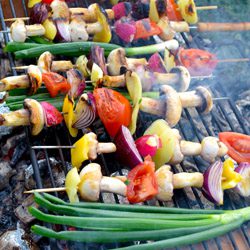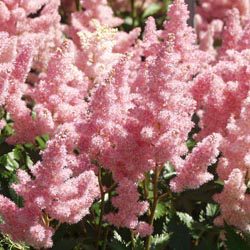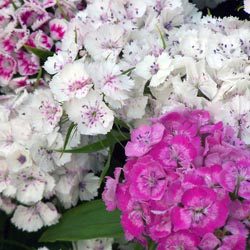A porch pot can be a beautiful accent to any entryway, and with a bit of patriotic flair, you can easily style a Fourth of July porch pot as a decorative highlight for all your summer festivities. By carefully designing the pot and the plants it showcases, it can burst into festive glory just in time for the holiday.
Beyond the Porch
A porch pot is traditionally an elegant container positioned at the main front entryway, but for summer porch pots it’s fun to look beyond the porch for where to show off your festive container. Where will you be greeting guests and entertaining during the summer months? Any gathering spot can be made more seasonal with the right porch pot, so consider placing one or more pots…
- In the corners of a deck or patio
- Spaced along a bare section of fence
- On stairs leading up to a deck or porch
- Framing an outdoor kitchen or grill area
- Accenting a pool surround
- As an outdoor table centerpiece
Wherever your pots can be seen, they’re sure to add a patriotic bit of color to give a party-like atmosphere to your outdoor living spaces.
Picking the Pot
When choosing a container for a Fourth of July pot, first consider where the pot will be located and choose an appropriate size for that location. Be mindful that the pot will not block walkways or cause a trip hazard on stairs, and be sure it is sturdy enough to hold up the plants you want to showcase.
The pot style can vary, and choosing a pot with patriotic colors can add instant flair to your decorative arrangement. Red, white, or blue pots are always popular choices, or the pot could be painted with a patriotic theme such as stars and stripes. Spattering a white pot with red and blue is a more subtle but festive option, or larger polka dots could be a bold and colorful statement. To honor a military connection, consider a pot with a camouflage pattern, or choose a more demure, understated pot to let the plants be the true stars of the arrangement.
Top Fourth of July Flower Picks
You can add any type of flowers you’d like to a Fourth of July porch pot, but red, white, and blue blooms are always favorites. Fortunately, there are many flower choices that can work into this color palette, including…
- Red – Petunia, zinnia, verbena, cardinal flower, impatiens, geraniums, nasturtium
- White – Zinnia, dahlia, geranium, verbena, daisy, petunia, cleome, vinca, snapdragon, impatiens
- Blue – Agapanthus, clematis, scabiosa, verbena, wishbone flower, lobelia, salvia, ageratum
In addition to bloom colors, you can also consider flower shape and opt for star-shaped blooms such as lilies, pentas, or star jasmine. Tall, flowing grasses with arcing plumes are another elegant option that mimics the gracefulness of fireworks. The round balls of allium and the spikes of salvia are other interesting shapes popular in patriotic displays.
Whichever plants you choose for your pot, remember the thriller-filler-spiller rule of thumb to create a lush, eye-catching arrangement, and it will sure to be a stunning decoration.
Planting Your Pot
Ideally, a Fourth of July porch pot should be planted several weeks before the holiday or any summer event so the plants have a chance to settle and fill in the pot before the celebration. If you’ve chosen a larger pot, add a layer of rocks or a brick or two to the bottom of the pot so it is properly weighted and will be less likely to tip over if accidentally bumped. Choose high quality potting soil to give each plant the proper nourishment, and ideally choose plants that all have similar sunlight and watering needs so they will thrive together.
Summer Porch Pot Care
Once planted, you will need to give your Fourth of July porch pot the proper care so it continues to look its best. Positioning the pot on a moveable stand or casters will help you be sure it has adequate light even as shadows shift from week to week, and rotating the pot will ensure the plants grow evenly. Water the pot appropriately, bearing in mind that smaller pots will need more frequent watering, especially on hot summer days. Fertilizing should not be necessary if you’ve used high quality potting soil, but if needed, fertilize sparingly to avoid burning roots or causing uneven growth. As the plants get taller, stake them if necessary, and protect the pot from sudden summer storms so it is not tipped or flooded.
Decorative Accents for a Fourth of July Porch Pot
It’s easy to add a bit of holiday flair to the pot if you choose decorative stakes with a red, white, and blue theme. Miniature flags are a popular choice, or you can find metallic sprays or faux firework rockets that will add a fun touch to the arrangement. Pinwheels are another great option that add a bit of movement to the pot.
Tying a ribbon around the pot can also add a holiday touch. Choose red, white, or blue ribbons, or opt for a rustic theme with gingham or checked patterns. Gold ribbons can also be a meaningful way to honor military members and deployed troops.
Be creative and fun with decorative accents for your porch pot, and it will be an eye-catching, attractive arrangement and a focal point for all your summer holiday entertaining.









































